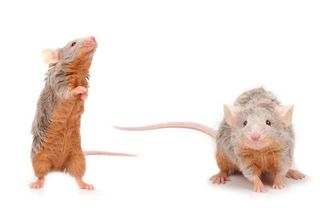Teenage Mice 'Cry' to Ward Off Frisky Males

Young mice secrete a pheromone in their tears in order to signal to older males that they're too young to mate, a new study finds.
Like humans, mice display affection, aggression and fear toward others of their species. But humans are a mostly visual species, whereas mice, which are nocturnal, rely mostly on smell — in particular, chemical signals known as pheromones.
Now, researchers have identified a pheromone that juvenile mice secrete through their tear ducts, which warns would-be mates that they have not reached sexual maturity. When adult male mice catch a whiff of the signal, they direct their amorous intentions elsewhere. [50 Sultry Facts About Sex]
"The mouse olfactory system gives us a way to study behaviors that humans display," said study researcher Stephen Liberles of Harvard Medical School, in Boston.
Mice produce pheromones in their tears, saliva and urine to signal aggression to other males, elicit sexual responses in females (and likely in males too), and help newborn mice communicate with parents. The newly discovered pheromone appears to signal age, because it is only produced by mice that have not yet undergone puberty, Liberles told LiveScience.
The vomeronasal organ, a sensory organ found in many animals but not in humans, detects the information-rich scents.
The researchers screened the mouse genome to look for genes that carry the blueprint for various pheromones. They found that juveniles release a pheromone known as ESP22 that activates neurons in the vomeronasal organ of adult male mice.
Sign up for the Live Science daily newsletter now
Get the world’s most fascinating discoveries delivered straight to your inbox.
When the scientists blocked production of the pheromone or its receptors, adult males became more sexually interested in juvenile females (and even in juvenile males, which produce the pheromone too). But when they painted the pheromone onto mice that weren't capable of producing it, the chemical effectively warded off the older males.
The findings, detailed today (Oct. 2) in the journal Nature, suggest that ESP22 serves as an important indicator of mating readiness. Understanding how pheromones elicit their response in mice can offer insight into the neural circuits used to guide behavior in other animals, including humans, Liberles said.
"It's an open question how humans decide to mate with certain people and not other people," Liberles said, though he cautioned that humans and mice use very different sensory mechanisms to control behavior.
Follow Tanya Lewis on Twitter and Google+. Follow us @livescience, Facebook & Google+. Original article on LiveScience.

Most Popular

